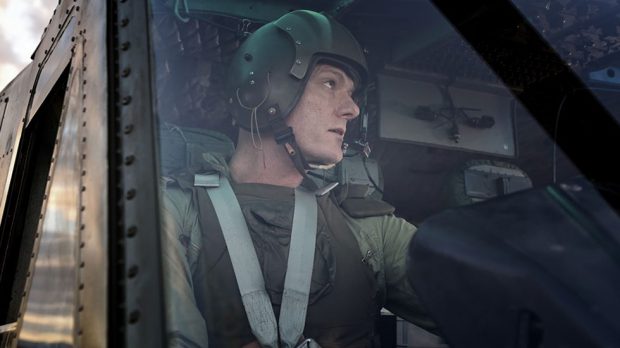
In August 1966, 108 Australian and New Zealand soldiers found themselves facing 2000 North Vietnamese and Viet Cong troops in the rubber plantation of Long Tan. Danger Close: The Battle of Long Tan tells the true story of the extraordinary ANZAC engagement during the Vietnam War. DAVID O’CONNELL spoke to Perth actor Myles Pollard about playing the role of one of the many heroes of that day, Flight Lieutenant Frank Riley.
Is it an added challenge as an actor to play a historical character?
It’s always a bit of a challenge, sure. To try and catch their sensibilities, I suppose. I was lucky enough to have a bit of a heads up, with the work of the producers, who’ve obviously been on the project for so many years and knew the characters. So I got a real good sense as to who Frank Riley was, and what part he played in Long Tan. He was the commander of helicopter detachment, and that defining moment (when he went in and performed an ammunition drop to his mates surrounded by thousand Viet Cong) he went against all the wishes of his superiors to do it. For me, and the producers, it was about trying to capture that larrikin spirit. That Digger mentality. That was really strong in Frank Riley.
Well, tell us a little about Flight Lieutenant Frank Riley…
He was a guy that needed to make a big decision. In a war movie, extreme situations bring out the conflict in a film, which is what you want in storytelling. So for Frank, his big decision was putting his career on the line, his responsibility was towards to his mates in the heat of battle. So he put his life on the line, and put his career on the line, to save them.
I don’t know if you’ve had a chance to see it at a general showing?
No, I haven’t had a chance at see it yet.
Oh… I was going to ask what it’s like to elicit that level of response from the audience. You certainly had one of the lines of the film for the screening I was at…
I hear that moment works really well. We talked a lot about it, because the part’s really not that big, but it’s important where it’s positioned.
Where did you film?
We’re up in Queensland, most of it was shot in Kingaroy for the battle scenes. But there was a studio on the Goldie (Gold Coast) where I shot the helicopter stuff.
So did they build a set, or hollow out an old Huey for it?
Yeah, well, they managed to get the actual Huey shell from an RSL in Caloundra. The actual helicopter that Frank Riley flew into battle. So they hoisted it up on a massive crane, in front of a massive green screen. So they had me in this helicopter, suspended on a crane, with a green screen around it, which was a totally unique experience for me. Never done that before.
There was a massive automatic gun firing off blanks, dolly shots going in and around helicopter. It was really quite difficult, reacting to the pretend bullets on the glass, and doing all the physical movements within the helicopter, because you can’t really move the helicopter when it’s suspended by crane. So they achieved a lot of it through the movement of the camera. You feel like a bit of a dick, having to pretend to be hit, or pretend to move. So it was complex and challenging, but fun at the same time.
Did you have any training, so you looked like you knew what you were doing in the helicopter?
We had a couple of sessions with an actual pilots, we could work out the process of starting the helicopter up, what you do in the air, and the process of heading into battle. So when you going through those exposition shots, when you start up the helicopter, you’re not just faking it, everything is justified. Even putting on the headset, and where you connect to. The technicality of having to do that in time, with a performance, and then having to repeat it time and time again, with a continuity to those movements, is really critical and really challenging. You want to make it believable, you don’t want someone watching the film and saying, “that’s bullshit”.
It was an emotional experience, if you know the story. You know you are creating something that means a lot, to a lot of people. (Especially to) Veteran families, the film is for their families. It’s a legacy film. You want to do them justice. Sitting in the actual helicopter, knowing what you pretending to do, actually happened…it’s eerie.
For the readers that may not know, what about the Battle of Long Tan makes it such an Australian story?
I think it’s all about the culture of mateship and loyalty, more so than the battle. The film doesn’t really cover off on the politics of battle, that’s completely different film (that’s a full bottle of wine conversation). Every war film is an anti-war film, there’s nothing about the battle that glorifies war. I think what’s important is, that people have to understand, that what happened in that situation is a testament to human spirit. These young boys are placed into extreme circumstances. The way these Aussies dealt with it, it goes to the heart of our cultural make up. I think the way these Diggers dealt with it was pretty amazing. I think that’s where the movie gets its relevance. It’s a human story, not a political story.